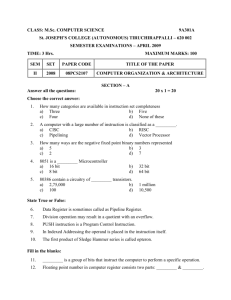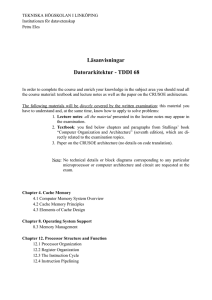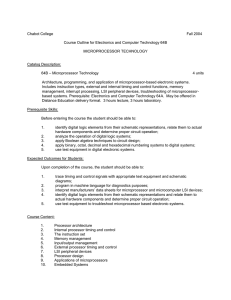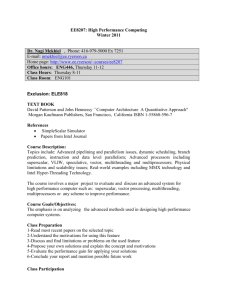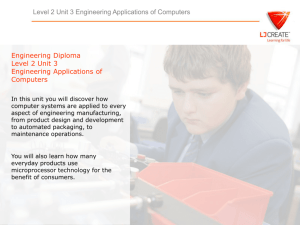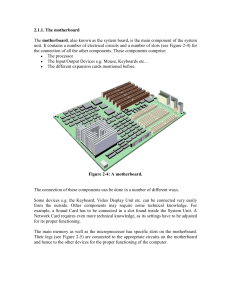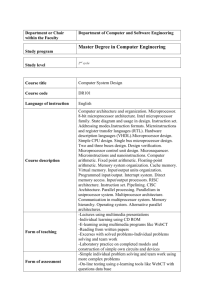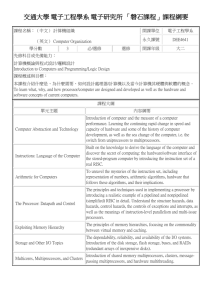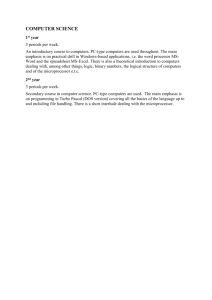Microprocessor Systems
advertisement
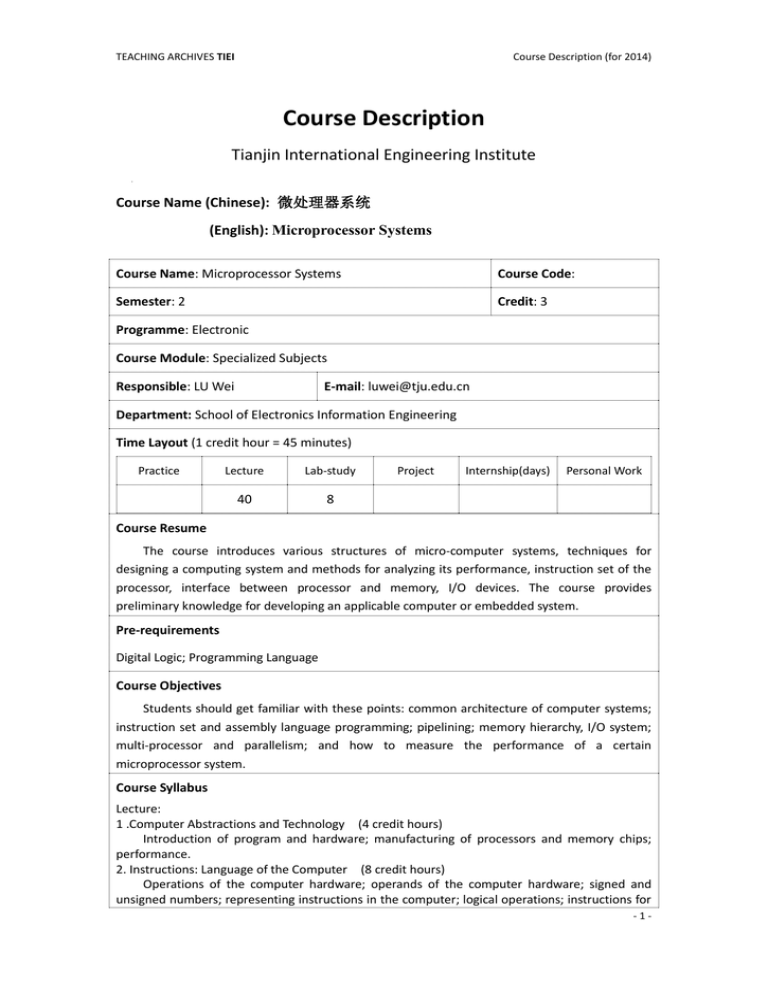
TEACHING ARCHIVES TIEI Course Description (for 2014) Course Description Tianjin International Engineering Institute Course Name (Chinese): 微处理器系统 (English): Microprocessor Systems Course Name: Microprocessor Systems Course Code: Semester: 2 Credit: 3 Programme: Electronic Course Module: Specialized Subjects Responsible: LU Wei E-mail: luwei@tju.edu.cn Department: School of Electronics Information Engineering Time Layout (1 credit hour = 45 minutes) Practice Lecture Lab-study 40 8 Project Internship(days) Personal Work Course Resume The course introduces various structures of micro-computer systems, techniques for designing a computing system and methods for analyzing its performance, instruction set of the processor, interface between processor and memory, I/O devices. The course provides preliminary knowledge for developing an applicable computer or embedded system. Pre-requirements Digital Logic; Programming Language Course Objectives Students should get familiar with these points: common architecture of computer systems; instruction set and assembly language programming; pipelining; memory hierarchy, I/O system; multi-processor and parallelism; and how to measure the performance of a certain microprocessor system. Course Syllabus Lecture: 1 .Computer Abstractions and Technology (4 credit hours) Introduction of program and hardware; manufacturing of processors and memory chips; performance. 2. Instructions: Language of the Computer (8 credit hours) Operations of the computer hardware; operands of the computer hardware; signed and unsigned numbers; representing instructions in the computer; logical operations; instructions for -1- TEACHING ARCHIVES TIEI Course Description (for 2014) making decisions; procedure. 3. Arithmetic for Computers (6 credit hours) Add and subtraction; multiplication, division, floating point. 4. The Processor (8 credit hours) A simple implementation; pipelining. 5. Large and Fast: Exploiting Memory Hierarchy (6 credit hours) Caches; measuring and improving cache performance; virtual memory. 6. Storage and Other I/O Topics (4 credit hours) Disk storage, flash Storage; connecting processor to memory and I/O devices; designing an I/O System. 7. Multicores, Multiprocessors, and Clusters (4 credit hours) The difficulty of creating parallel programs; shared memory multiprocessors; clusters and other message-passing multiprocessors; SISD, MIMD, SIMD, SPMD, and Vector; Graphics Processing Units. Computer Lab: Experiments for performance benchmarking. (2 credit hours) Programming with assembly language. (6 credit hours) Text Book & References Computer Organization and Design: The Hardware/Software Interface, Fourth Edition, ARM Edition, David A. Patterson, John L. Hennessy, Morgan Kaufmann, 2010. Reference: Structured Computer Organization, 6th Edition, Andrew S. Tanenbaum, Todd Austin, Pearson, 2012. Capability Tasks CT1 CT3 Achievements Common architecture of computer systems. - Level: N Instruction set and assembly language programming. - Level: M Pipelining. - Level: A Memory hierarchy and I/O system. - Level: A Multi-processor and parallelism. - Level: N How to measure the performance of a certain microprocessor system. - Level: M Students: Electronic year 2 -2-
